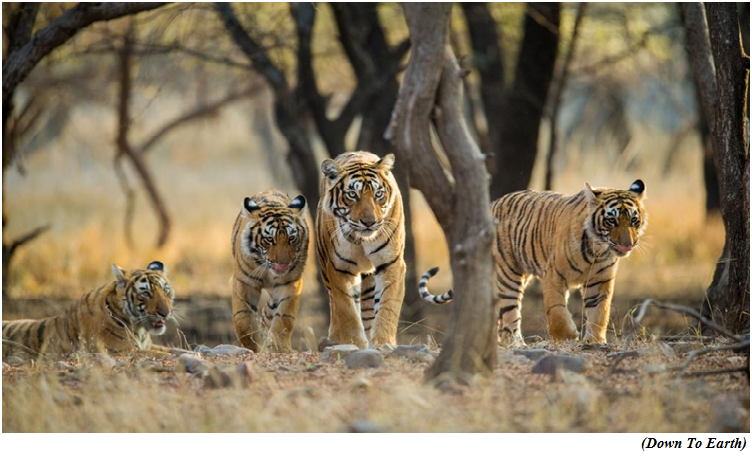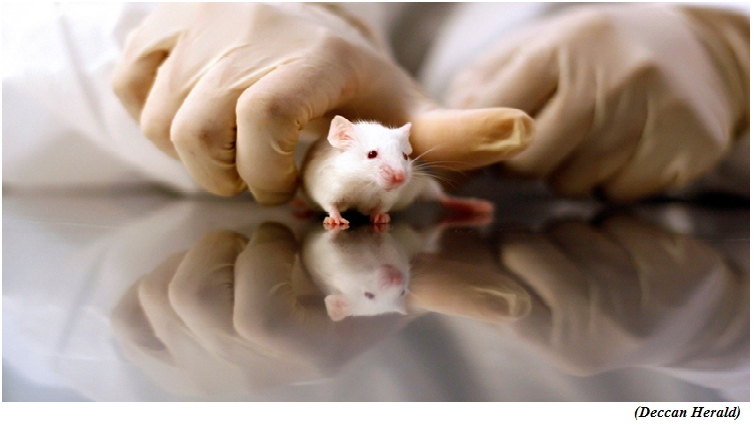TROPEX 23 (GS Paper 3, Defence)

Why in news?
- Every second year, the Indian Navy sails out to sea and conducts a major battle exercise to verify that it is ready in all respects for war.
- 2023 exercise, called the “Theatre Level Operational Readiness Exercise for 2023” (TROPEX-23), culminated recently in the Arabian Sea after running for four months from November 2022 to March 2023.
Participation:
- The overall exercise construct included Coastal Defence exercise Sea Vigil and the Amphibious Exercise AMPHEX. Together, these exercises also witnessed significant participation from the Indian Army, the Indian Air Force and the Coast Guard.
Key Highlights:
- Set in the Indian Ocean including the Arabian Sea and the Bay of Bengal, the theatre of operations for the exercise extended approximately 4300 nm from North to South upto 35 deg South Latitude and 5000 nm from Persian Gulf in the West to North Australia coast in the East, spanning an area of over 21 million square nautical miles.
- TROPEX 23 witnessed participation of approximately 70 Indian Navy ships, six submarines and over 75 aircraft.
- These warships are from both the western and eastern naval fleets. One year, the western fleet sails to the Bay of Bengal to participate in TROPEX, while the eastern fleet sails to the Arabian Sea the following year. Part of the fleet is designated as the enemy “Red Force”, which takes on the “Blue Force” — an Indian Navy component.
- The overall exercise includes a combat firing phase, in which warships fire torpedoes, depth charges, surface-to-air missiles and surface-to-surface missiles in order to ensure that the warships’ ordnance is firing as it should.
Conclusion:
- The culmination of TROPEX-23 brings to an end an intense operational phase for the Indian Navy that commenced in November 2022.
New wildlife corridor to come up after reintroduction of tigers in MNP
(GS Paper 3, Environment)
Why in news?
- Recently, the Union Minister JyotiradityaScindia said a new wildlife corridor will form between Madhya Pradesh and Rajasthan after three tigers are released in Madhav National Park (MNP) in MP's Shivpuri district.

Details:
- Shivpuri borders Sheopur district which houses the Kuno National Park, the new home of 20 cheetahs brought from Namibia and South Africa.
- With the reintroduction of three tigers, a wildlife corridor linking MNP, Kuno National Park, Panna Tiger Reserve (all in MP) and Ranthambore Tiger Reserve in Rajasthan will come up.
Reintroduction in MNP:
- A tiger captured from the campus of the Maulana Azad National Institute of Technology (MANIT) in October will be brought from Satpura Tiger Reserve, while the two tigresses will be brought from Panna and Bandhavgarh Tiger Reserves. The tiger, after its capture in Bhopal, was released in Satpura in October.
- The three animals, after being kept in separate enclosures for some time, will be released in the wild at MNP which is spread over 375 square kilometres.
- This is the third time the MP forest department is going to reintroduce a tiger in a wildlife sanctuary following successful reintroductions in Panna Tiger Reserve and Nauradehi Wildlife Sanctuary in Sagar district.
Tigers in MNP:
- MNP has a good prey base for big cats. The number of tigers was fairly good in MNP in 1970
- But since 2010, no tiger has been seen in the area, with wildlife experts blaming hunting for their disappearance.
- As per reports, tigers from Rajasthan roamed around MNP for some time in 2010-12.
About MNP:
- The forest is home to tigers, leopards, Nilgai, and Chinkara (Gazella bennettii) and Chousingha (Tetracerus quadricornis) and Deers (Chital, Sambar and Barking Deer) among others.
- Tiger Corridor: The Park falls within one of the 32 major Tiger Corridors of the country, which are operationalised through the Tiger Conservation Plan. Tiger Conservation Plan is implemented under the Wildlife (Protection) Act, 1972.
- Madhav National Park is a part of the Ranthambhore-Kuno-Madhav (Madhya Pradesh and Rajasthan) Tiger Corridor of Central India & Eastern Ghats landscape.
- The Park is currently facing displacement and rehabilitation issues as it is home to Particularly Vulnerable Tribal Groups (PVTG)s like Saharia.
Smoke particles from wildfires can cause erosion in ozone layer: Research
(GS Paper 3, Environment)
Why in news?

Impact of Mega fire in Australia:
- The study, focuses on the smoke from the ‘Black Summer’ mega-fire that burned in eastern Australiafrom December 2019 to January 2020. The fires, which were the most destructive on record in the country, scorched tens of millions of acres and released more than a million tonnes of smoke into the atmosphere.
- The MIT team identified a new chemical reaction by which smoke particles from the Australian wildfires made ozone depletion worse.
- By triggering this reaction, the fires likely contributed to a 3-5 per cent depletion of total ozone at mid-latitudes in the southern hemisphere, in regions overlying Australia, New Zealand, and parts of Africa and South America.
- The researchers' model also indicates the fires had an effect in the polar regions, eating away at the edges of the ozone hole over Antarctica. By late 2020, smoke particles from the Australian wildfires widened the Antarctic ozone hole by 2.5 million square kilometres, 10 per cent of its area compared to the previous year.
Long-term effect of wildfires on ozone recovery:
- The United Nations recently reported that the ozone hole, and ozone depletion around the world, are on a recovery track, thanks to a sustained international effort to phase out ozone-depleting chemicals.
- But the MIT study suggests that as long as these chemicals persist in the atmosphere, large fires could spark a reaction that temporarily depletes ozone.
Japanese scientists create mice with two fathers
(GS Paper 3, Science and Tech)
Why in news?
- In a breakthrough, Japanese scientists have created mice with two biological fathers, an advance that can pave the way for new fertility treatments in humans.

Details:
- The details of the new study were revealed at the Third International Summit on Human Genome Editing at the Francis Crick Institute in London.
- Researchers hope that the new medical development could also pave way for same-sex partners to have a biological child together in the future.
Key Highlights:
- Previously, scientists have created mice that technically had two biological fathers, and also mice with two mothers. However, this is the first time eggs have been cultivated from male cells.
- The team led by scientists at the universities of Kyushu, and Osaka in Japan made the mice using eggs from male skin cells.
- The novel technique can help two men to have children together. And also help in treatments for severe forms of infertility, such as Turner's syndrome, where one copy of the X chromosome is Oocytes from male cells
How the whole process took place?
- In the study, they transformed a male skin cell with the XY chromosome combination, into an egg, with the female XX version.
- Male skin cells were reprogrammed into a stem cell-like state to create so-called induced pluripotent stem (iPS) cells.
- They then deleted the Y-chromosome and replaced it with an X chromosome that was "borrowed" from another cell to produce iPS cells with two identical X chromosomes.
- The cells were then cultivated in an ovary organoid which replicated the conditions inside a mouse ovary.
- After fertilising the eggs with normal sperm, the team obtained about 600 embryos. These were then implanted into surrogate mice, resulting in the birth of seven mouse pups.
- The efficiency of about 1 per cent was lower than the efficiency achieved with normal female-derived eggs, where about 5 per cent of embryos went on to produce a live birth.
- The baby mice appeared healthy, had a normal lifespan, and went on to have offspring as adults.
What’s next?
- The team is working to replicate the breakthrough in human cells. However, it will take some time to achieve that reality.





